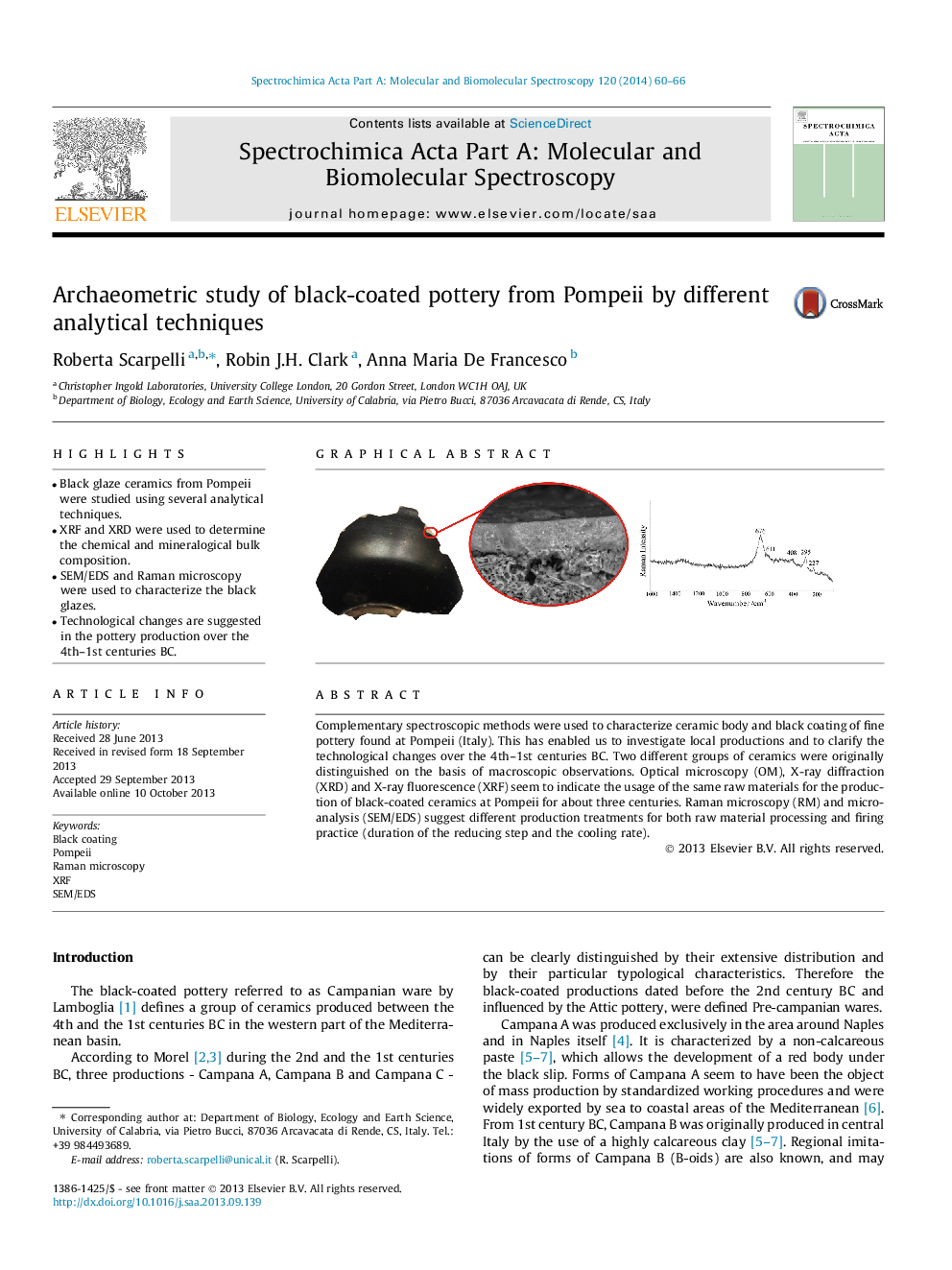| Article ID | Journal | Published Year | Pages | File Type |
|---|---|---|---|---|
| 1230824 | Spectrochimica Acta Part A: Molecular and Biomolecular Spectroscopy | 2014 | 7 Pages |
•Black glaze ceramics from Pompeii were studied using several analytical techniques.•XRF and XRD were used to determine the chemical and mineralogical bulk composition.•SEM/EDS and Raman microscopy were used to characterize the black glazes.•Technological changes are suggested in the pottery production over the 4th–1st centuries BC.
Complementary spectroscopic methods were used to characterize ceramic body and black coating of fine pottery found at Pompeii (Italy). This has enabled us to investigate local productions and to clarify the technological changes over the 4th–1st centuries BC. Two different groups of ceramics were originally distinguished on the basis of macroscopic observations. Optical microscopy (OM), X-ray diffraction (XRD) and X-ray fluorescence (XRF) seem to indicate the usage of the same raw materials for the production of black-coated ceramics at Pompeii for about three centuries. Raman microscopy (RM) and micro-analysis (SEM/EDS) suggest different production treatments for both raw material processing and firing practice (duration of the reducing step and the cooling rate).
Graphical abstractFigure optionsDownload full-size imageDownload as PowerPoint slide
